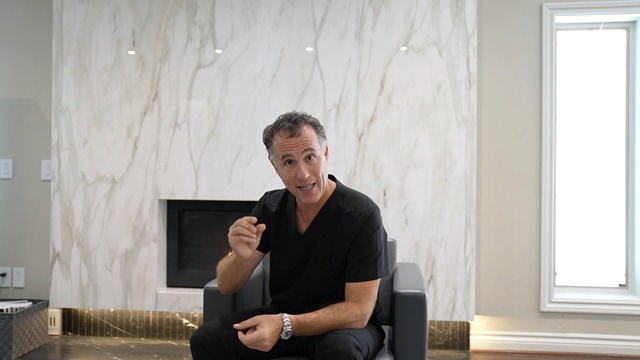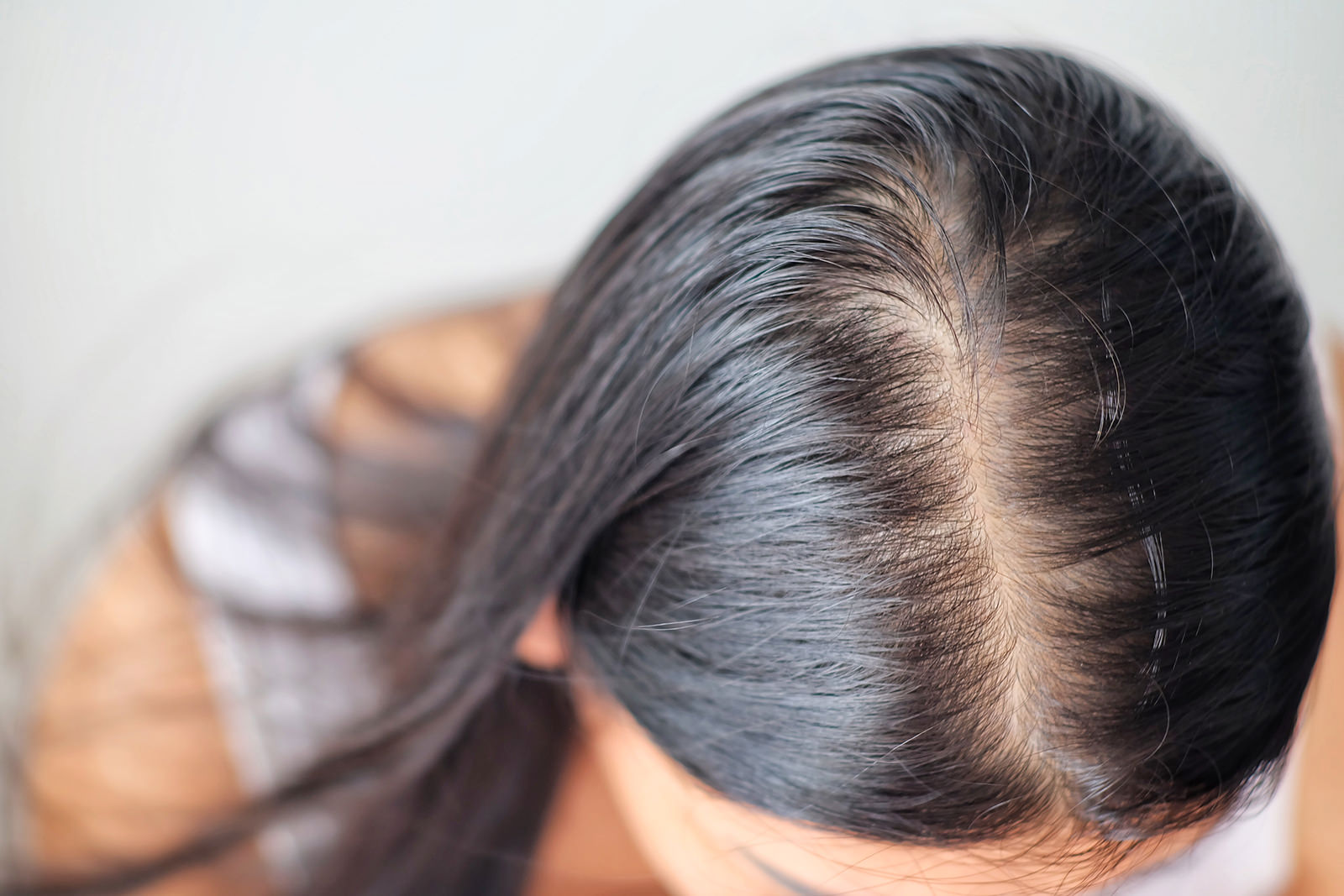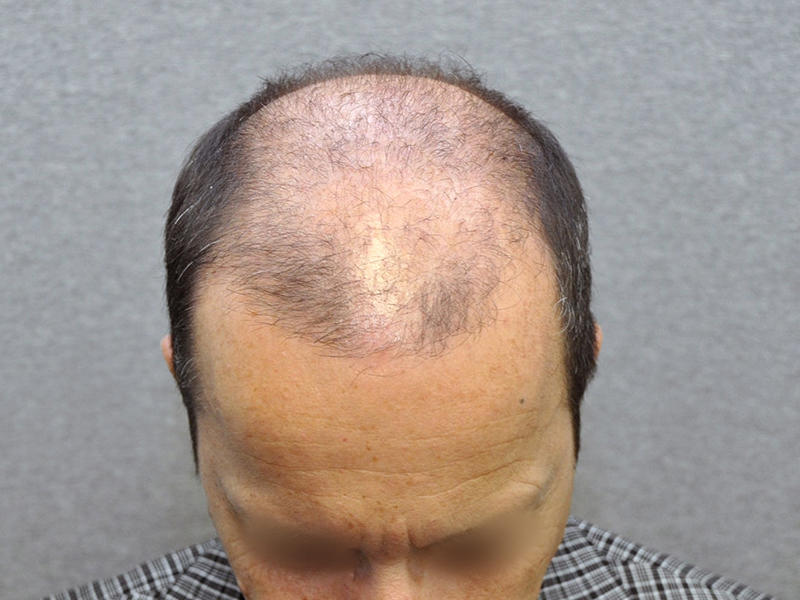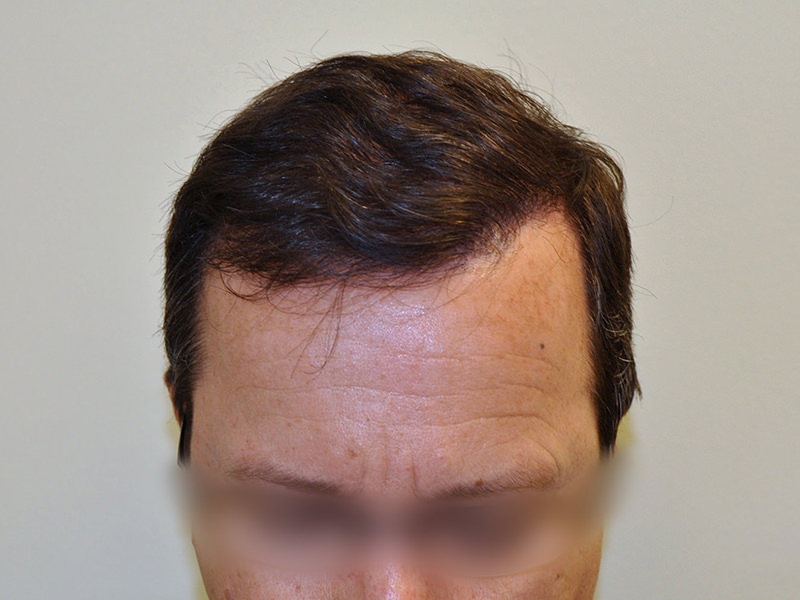

We are very excited to use in our practice injection therapy for hair restoration, such as enriched cells injections. Injections for hair loss treatment is a non-surgical option for both men and women who are suffering from hair loss and thinning. Injections therapy stands for enriched cells injections and can help patients with genetic hair loss, androgenetic alopecia and stress-related hair loss.
In conjunction with hair transplantation, this can be a powerful technique to improve graft growth, to diminish the loss of surrounding transplanted hair what we call a shock loss following your hair transplantation and also to improve the health of our graft during the procedure itself and when use the injection solution as the graft storage medium.
At Follicle HT we are cutting age as what it is available in injection medicine as part of hair restoration practice.
How it works
Injections therapy is rich healthy factors, that help the hair follicle and surrounding skin cells to function as optimally as they can. It’s a very safe treatment that uses your own blood cells to stimulate hair regrowth.
Injections hair loss treatment involves three important steps. We will first collect a blood sample from the patient’s arm. The blood is then processed in a centrifuge machine to separate the enriched cells and injected into the scalp where hair loss or thinning has occurred. Over the following weeks the high concentration of growth and healing cells in the injections therapy boost blood supply to the hair follicles which activates natural hair growth and can make the hair shaft thicker. Injection therapy prolongs the hair growth cycle which results in fuller, healthier hair.
Results
Immediately after the treatment, it’s normal to experience some swelling and redness on the scalp, which will resolve within a few hours. The first visible results for a typical injections therapy hair loss treatment begin 3 months after the first session with reduction in shedding, appearance of re-growth and thickening of the hair. Treatments should be performed every 2-3 weeks for approximately 6 to 12 sessions in order to achieve optimum results. While injections enhance hair growth, they can also prevent future loss of hair in the surrounding treatment area.

FAQs
What is PRP?
PRP stands for platelet rich plasma therapy. This is what is referred to as an autologous blood-derived treatment, which means that the biologically active agent that we inject is derived from the patient’s own blood.
Whole blood has multiple different components including the red blood cells that carry oxygen throughout the body, white blood cells that fight infection, and the plasma matrix, which is the liquid base of blood.
Important components of our blood are the platelets which are responsible for the clots that form to stop the bleeding when we are cut or injured. Platelets also contain important growth factors and other cytokines that are important in cell signaling, so by concentrating the platelets and applying them to damaged tissue, we can promote cell proliferation, tissue repair and regeneration. Platelets may also play a role in reducing inflammation, and it is believed inflammation may be one of the factors that underlie hair loss.
How is PRP used?
PRP has many applications, especially in orthopedic surgery and sports medicine where it used to treat cartilage and tendon damage, as well as other injuries. In addition, there have been numerous studies carried out that support the use of PRP treatment in the management androgenetic alopecia – or male and female pattern hair loss. Randomized controlled trials have shown that PRP injections can result in a statistically significant increase in hair density and thickness in both men and women.
PRP is prepared by drawing a sample of the patient’s own blood, just like we would for a standard lab test. The blood is mixed with an agent that prevents it from clotting, and then placed in a centrifuge that spins at a high rate of speed, separating the platelets out of the whole blood, sort of like how the pulp in a jug of orange juice settles to the bottom, with the liquid component resting on top. We can then draw off the concentrated platelets and inject them into areas of the scalp where hair is thinning.
How many treatments are required?
Different practitioners have different protocols, but most clinics well recommend a series of around 3 or 4 monthly treatments to start, followed by maintenance treatments every 3-6 months after that.
Are there any side effects from PRP?
PRP treatment does require a blood draw from the arm, and a number of injections into the scalp using very tiny needles. There can be some discomfort from the injections themselves with some local pain, headache, or tightness in the scalp. One thing that is important to understand is that while PRP is a blood product, it is derived from the patient’s own blood, so there is no risk of contracting a blood borne disease such as HIV or hepatitis from PRP treatments.
What about PRF?
PRF stands for platelet rich fibrin therapy. PRF it is similar to PRP in that it is also an autologous blood-derived treatment that can be used to promote hair growth. PRF does differ somewhat from PRP in its preparation and composition, and in the way it works.
Fibrin is a protein that is involved and formation of blood clots. When activated, it polymerizes, which means that it forms a kind of natural glue. Unlike PRP, PRF is prepared without the use of an anticoagulant, and it is centrifuged at a lower speed. This results in a fibrin matrix that traps platelets, white blood cells, and other growth factors. When this is injected into the scalp, it provides more of a “slow release” treatment that gradually emits growth factors and cytokines over a longer period of time, potentially resulting and increased tissue regeneration and stimulation of the hair follicles. The fibrinogen matrix may also act as a sort of scaffold for new blood vessels, thereby improving the scalp microcirculation.
While more studies are needed, and both PRP and PRF have been shown to improve hair density and thickness, the available evidence seems to suggest that PRF may provide a more sustained growth factor release, and possibly improved hair growth outcomes.
What about exosomes?
Exosomes are very tiny vesicles – sort of like bubbles – that float around in the environment that surrounds the cells in our tissues. Exosomes contain different proteins and signaling molecules that influence different processes in the body such as regulation of the immune system, inflammation, and tissue repair.
There is early evidence that exosomes derived from donor adipose (i.e., fat) cells that have been specially prepared using advanced processes of centrifuge and filtration can stimulate growth in the dermal papillae of hair follicles, activate signaling to promote hair follicle regeneration, and potentially counteract the hair follicle miniaturization that is induced by dihydrotestosterone. While the studies are preliminary, some have reported increased hair density and patient satisfaction with exosome therapy, with few short-term side effects.
While evidence is emerging that exosome therapy may have a role to play in promoting hair growth, and it may have a promising future, its effectiveness relative to PRP and PRF treatments has not been established in high-quality trials.
How do you use PRP and PRF at Follicle HT?
There is good evidence to support the use of PRP and PRF treatments as part of the treatment plan for both men and women experiencing hair loss. In terms of the tools available for medical treatment, we still consider oral (and sometimes topical) finasteride to be the first line treatment for male patients, along with oral (and sometimes topical) minoxidil for both male and female patients. Finasteride is still the only available medication that targets the actual underlying cause of male pattern hair loss, which is the action of testosterone on genetically susceptible hair follicles. For these reasons, we consider PRP and PRF to be adjuncts that we use in addition to, but usually not instead of our first line treatments. It has been shown the PRP used in combination with minoxidil is probably better than PRP alone.
At Follicle, we almost always use PRP or PRF at the time of a hair transplant. There are several reasons for this. Firstly, we feel that by treating the recipient area with PRP or PRF at the time of the transplant, we are promoting survival and growth of the transplanted hair. We also feel that PRP and PRF are helpful in preventing “shock loss”, which is the temporary thinning of surrounding non-transplanted hair that we can sometimes see immediately after a hair transplant. In addition, we use some of the PRP that we prepare to supplement our graft holding solution in order to maximize follicle survival between the time of harvest from the back and sides of the scalp, and the time of implantation. Many of our patients will return for 2 or 3 further PRP or PRF sessions following their transplant in order to promote growth over that all important first year.
Blogs
Why choose Follicle HT for your hair transplant procedure?
Ultimately, the choice of where to have your hair transplant procedure is a personal one. At Follicle HT, our objective is total patient satisfaction. We accomplish this by providing state of the art follicular unit hair transplant surgery in a comfortable, fully accredited surgical facility where we adhere to the highest standards of comfort and safety.
Dr. Korman and Dr. Solomon's ultimate goal is to achieve outstanding results for their patients. They will help you decide which specific techniques will yield the most appropriate balance of coverage, density and complete naturalness from your hair transplant. Our doctors will be personally involved in every step of your journey from initial consultation to the procedure itself.
CONTACT US
START YOUR TRANSFORMATION TODAY
Your hair transplant journey begins with your decision to make a positive change.
At Follicle HT, our philosophy is that modern hair transplantation is a freedom granting procedure. We strive to help all our patients look and feel their very best by having the full range of options available.
Let’s open a discussion, see how we can help!






